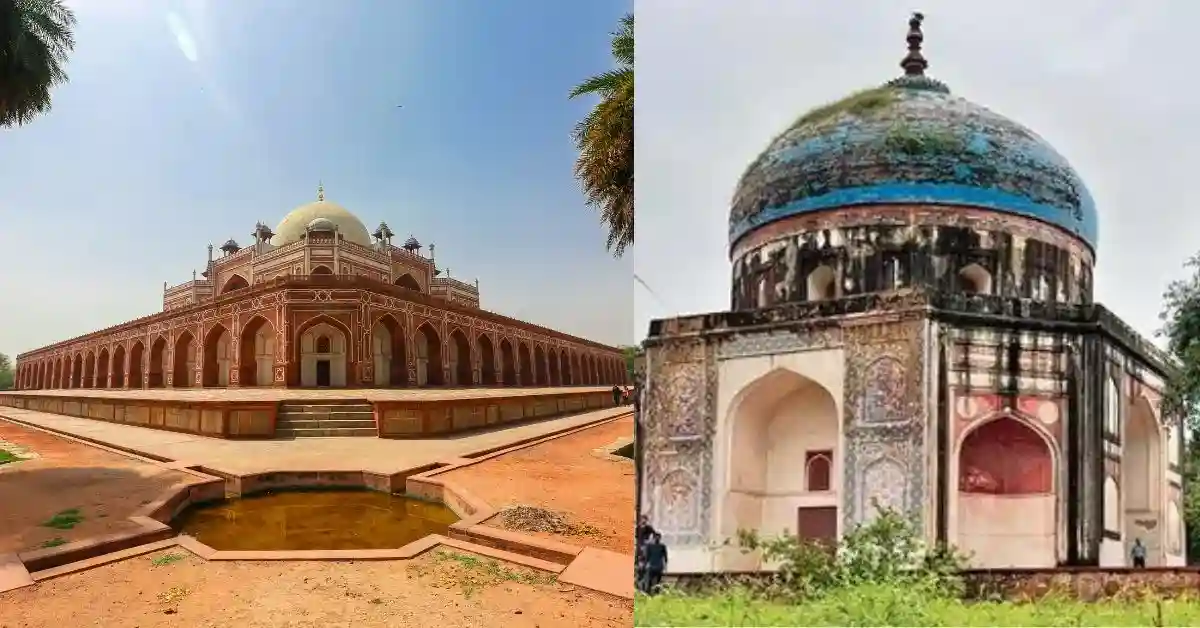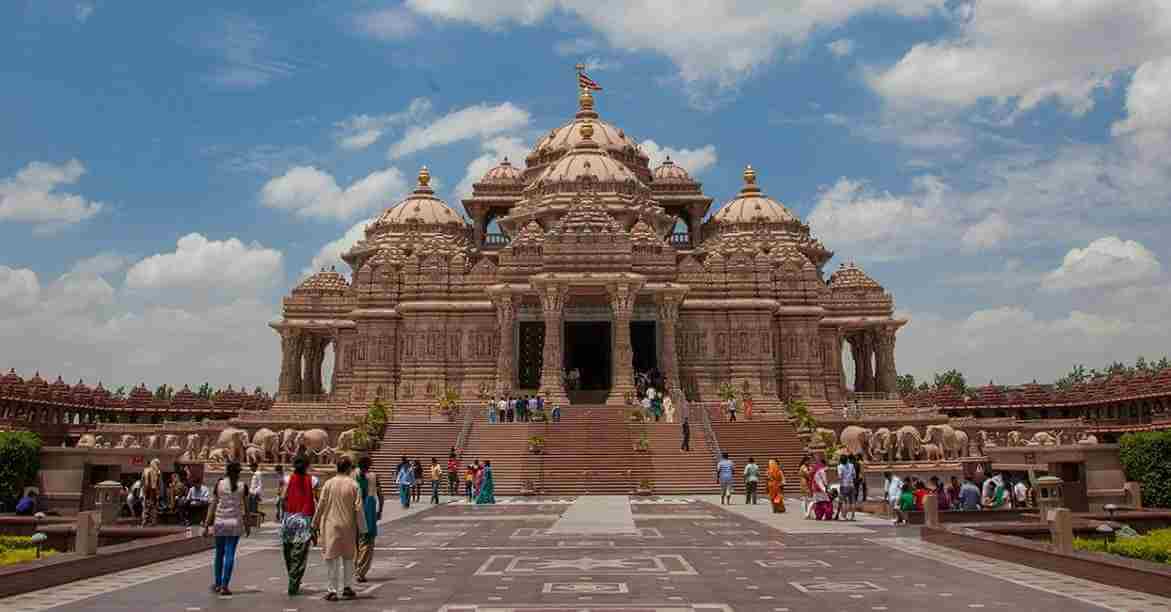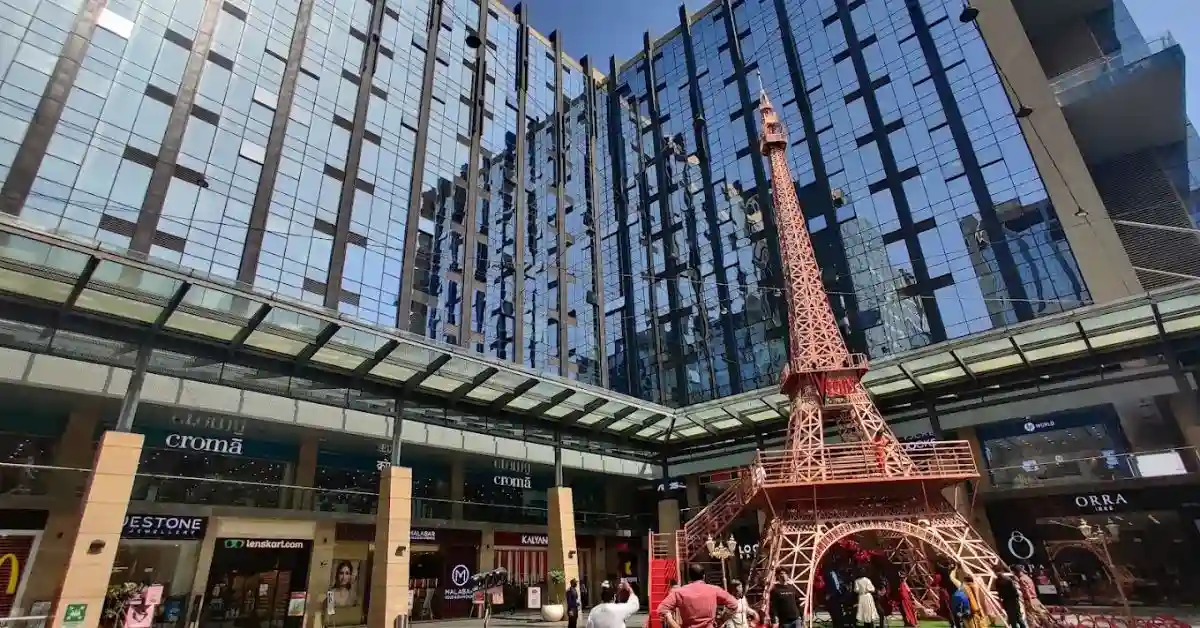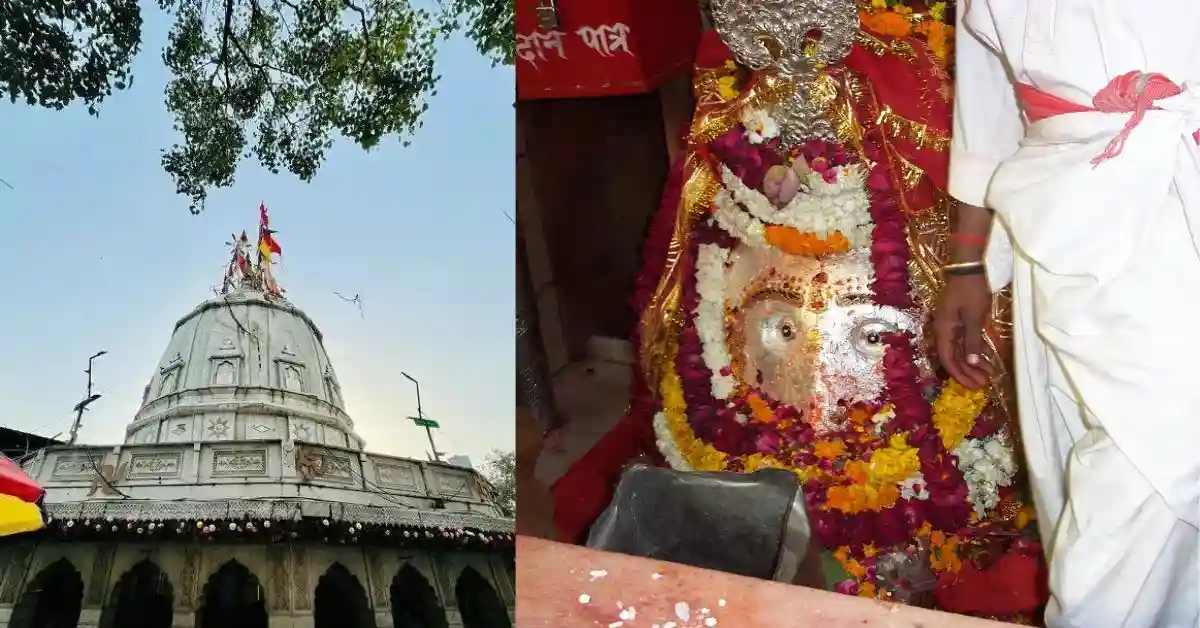About Humayun’s Tomb Delhi
Humayun’s Tomb Delhi is a magnificent architectural masterpiece that holds great historical and cultural significance. It was built in the 16th century and it is considered as one of the finest examples of Mughal architecture and served as a precursor to the grandeur of the Taj Mahal. The tomb was commissioned by Bega Begum, the first wife of Mughal Emperor Humayun in honour of his memory.
The structure is a fusion of Persian and Indian architectural styles, characterised by its symmetrical design, intricate detailing and grand proportions. It features a central dome, lofty arches and beautiful minarets, all constructed using red sandstone and white marble. The intricate geometric patterns and delicate inlay work on the walls and pillars showcase the exquisite craftsmanship of the Mughal artisans.
Humayun’s Tomb is surrounded by lush gardens and water channels. The tomb complex creates a serene and tranquil atmosphere. The charbagh (four-part) garden layout, inspired by Persian gardens, adds to its aesthetic appeal and provides a peaceful retreat for visitors. The tomb itself houses the cenotaph of Emperor Humayun, while the actual burial chamber is located in the basement.
Humayun’s Tomb has not only served as a mausoleum but also as a source of inspiration for subsequent Mughal architectural marvels. Its grandeur and beauty have made it a UNESCO World Heritage Site and a popular tourist destination, attracting visitors from around the world.
Today, Humayun’s Tomb stands as a testament to the rich cultural heritage of India and serves as a reminder of the architectural prowess and artistic brilliance of the Mughal era. It continues to captivate visitors with its timeless elegance and remains an enduring symbol of Delhi’s historical legacy.
Architecture Of Humayun’s Tomb Delhi
The architecture of Humayun’s Tomb Delhi is a captivating blend of Persian and Indian influences, showcasing the magnificence of Mughal architecture. This grand structure was built in the 16th century and is renowned for its symmetrical design, intricate detailing and skilled craftsmanship.
The tomb is constructed using a combination of red sandstone and white marble, creating a striking contrast. The main building features a central dome, surrounded by smaller domed chattris (kiosks) and is supported by towering arches and elegant pillars. The use of these architectural elements creates a sense of harmony and balance.
The walls of Humayun’s Tomb are adorned with intricate geometric patterns, calligraphy and delicate inlay work of precious stones which showcase the artistic skills of the Mughal craftsmen. The attention to detail is evident in the beautiful floral motifs, arabesques and verses from the Quran that are decorated in the exterior and interior of the monument.
The garden surrounding the tomb follows the traditional Persian charbagh layout, divided into four quadrants by pathways and water channels. Lush green lawns, vibrant flowers and serene water features add to the enchanting ambiance of the complex. The architectural brilliance of Humayun’s Tomb served as an inspiration for later Mughal structures, most notably the iconic Taj Mahal. Its grandeur, meticulous design and exquisite craftsmanship makes it a UNESCO World Heritage Site and a testament to the architectural genius of the Mughal era.
History Of Humayun’s Tomb Delhi
Humayun’s Tomb Delhi holds a rich history that dates back to the 16th century. It was commissioned by Humayun’s widow, Empress Bega Begum, also known as Haji Begum. The tomb construction began in 1565 and completed in 1572 at the cost of 1.5 Million Rupees and became the final resting place of Emperor Humayun.
The architectural design of Humayun’s Tomb is credited to Mirak Mirza Ghiyas, a Persian architect. The tomb’s design showcases a unique blend of Persian, Islamic, and Indian architectural styles, creating a harmonious fusion of cultural influences. Humayun’s Tomb holds significance not only as the resting place of Emperor Humayun but also as the first garden-tomb complex in the Indian subcontinent. The magnificent structure served as a template for subsequent Mughal architectural marvels, including the iconic Taj Mahal.
Over the years, Humayun’s Tomb underwent periods of neglect and decay, but efforts were made to restore and preserve its grandeur. Restoration work took place in the early 20th century, ensuring the conservation of this architectural masterpiece.
Today, Humayun’s Tomb stands as a testament to the grandeur of the Mughal Empire and its architectural legacy. The site attracts visitors from around the world who come to admire its intricate design, serene garden setting and historical significance. In recognition of its cultural and historical importance, Humayun’s Tomb has been designated as a UNESCO World Heritage Site in 1993, preserving its legacy for future generations to appreciate and cherish.
Char Bagh
The Char Bagh means Four Gardens which is an exquisite feature located within the premises of Humayun’s Tomb. This architectural masterpiece is a representation of the traditional Persian-style gardens. The Char Bagh divides the area into four equal parts and creates a symmetrical layout that is both visually appealing and spiritually significant.
The garden is designed to evoke the concept of paradise mentioned in Islamic literature, with its meticulously manicured lawns, pathways, water channels, and vibrant flowerbeds. Each quadrant of the Char Bagh is carefully planned and maintained, showcasing a harmonious blend of nature and geometric precision. The serene atmosphere of Charbagh Garden coupled with the breathtaking view of Humayun’s Tomb creates a captivating ambiance that is truly enchanting. The lush greenery, fragrant flowers and flowing water channels add to the charm of the surroundings and makes it a favourite spot for both locals and tourists.
The Char Bagh not only serves as a beautiful garden but also holds historical and cultural significance. It reflects the architectural brilliance and design principles of the Mughal era. The meticulous planning and execution of the Char Bagh showcase the attention to detail and the aesthetic sensibilities of the craftsmen involved in its creation.
Monuments To See Inside Humayun’s Tomb Complex
There are several notable monuments and structures that visitors can explore inside Humayun’s Tomb Comlex:
- Humayun’s Tomb: It is the main attraction of the Complex. It is a beautiful and grand tomb built in the Mughal Style for Emperor Humayun. This is the final resting place of the Mughal Emperor Humayun.
- Isa Khan’s Tomb: Located Adjacent to Humayun’s Tomb Complex, Isa Khan’s Tomb is an octagonal structure built in Honour of Isa Khan Niyazi, An Afghan Nobleman.
- Arab Sarai: This place was the resting place of Arab Craftsmen who worked on the Construction of Humayun’s Tomb Delhi. It consists of small rooms surrounding a central Courtyard.
- Bu Halima’s Tomb and Garden: This is a small square structure surrounded by a beautiful Garden with trees and flowering plants dedicated to the wet Nurse of Emperor Akbar, Bu Halima.
- Afsarwala Tomb and Mosque: Situated close to Humayun’s Tomb, this complex has a tomb of a Noble from Emperor Akbar’s Court. There is also a mosque with a Beautiful carvings.
- Chillah Nizamuddin Aulia: This was meant to be served as the residence of Delhi’s Patron Saint, Nizamuddin Auliya and is located just outside the Complex.
- Nila Gumbad: This small tomb is near Humayun’s Tomb, known for its blue dome and early Mughal Architectural Style.
Humayun’s Tomb Delhi Tickets Prices/Entry Fees
The Humayun’s Tomb Tickets Price for Indians is Rs 40 per person and for Foreigners is Rs 600 per person.
| Category | Tickets Price |
|---|---|
| Indians | Rs 40 |
| Foreigners | Rs 600 |
| Photography | Free |
| Video Filming | Rs 25 |
Humayun’s Tomb Delhi Online Ticket Booking
You can book the Ticket of Humayun’s Tomb Delhi from various websites.
Humayun’s Tomb Delhi Timings
The Timings of Humayun’s Tomb Delhi is From Sunrise to Sunset.
Best Time To Visit Humayun’s Tomb Delhi
The best time to visit Humayun’s Tomb Delhi is during Winter season when the weather is pleasant.
Humayun’s Tomb Delhi Photos/Images
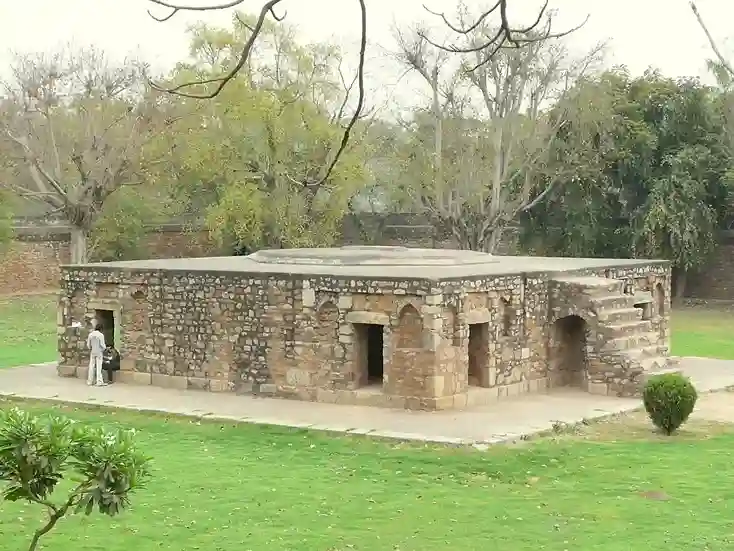
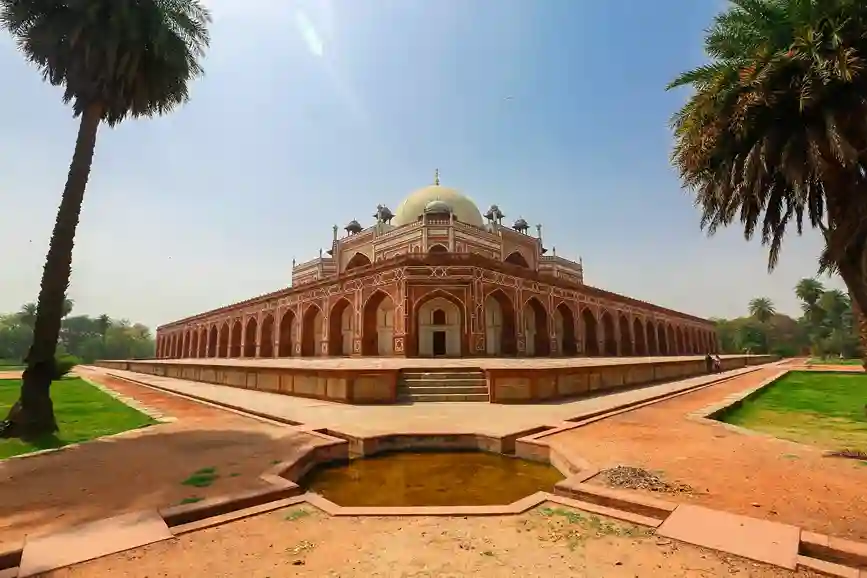
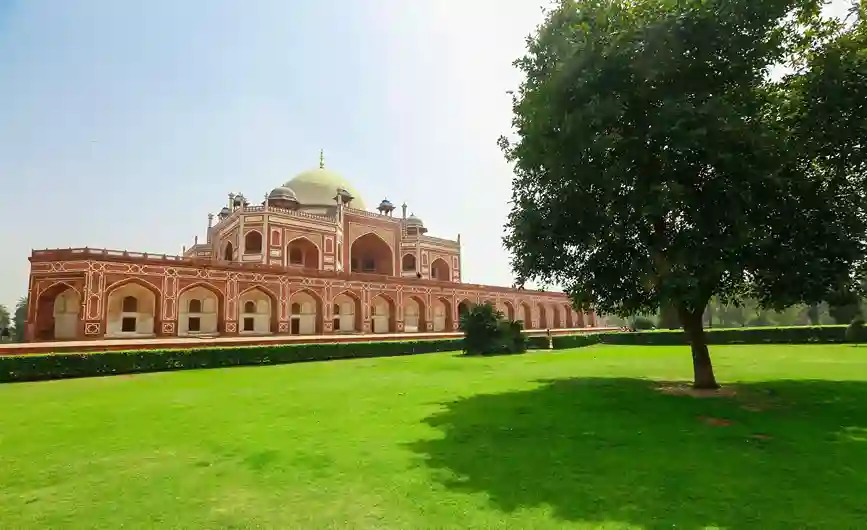

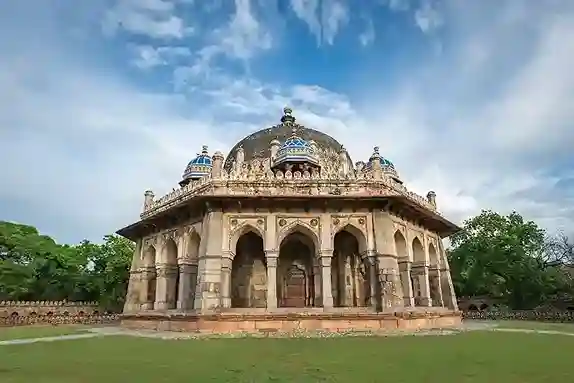
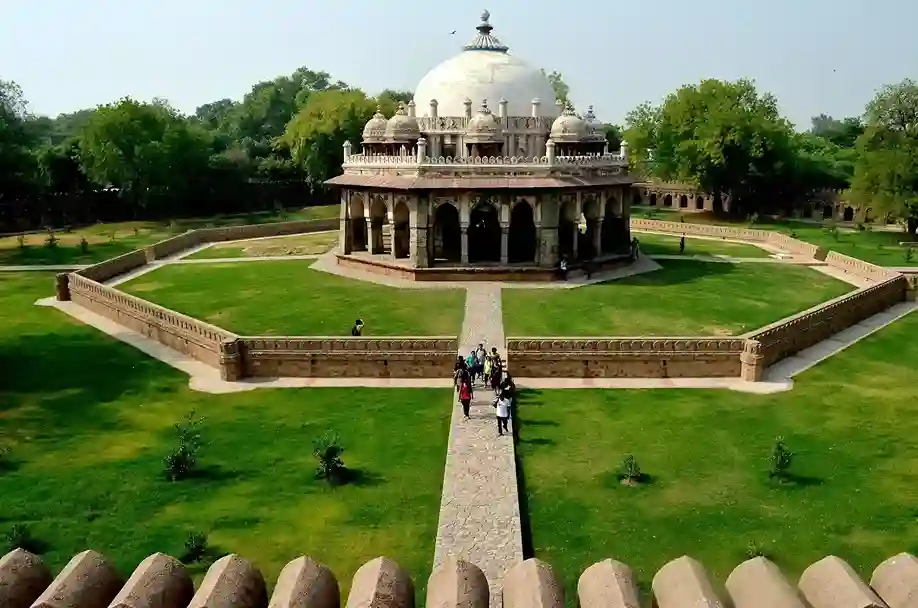
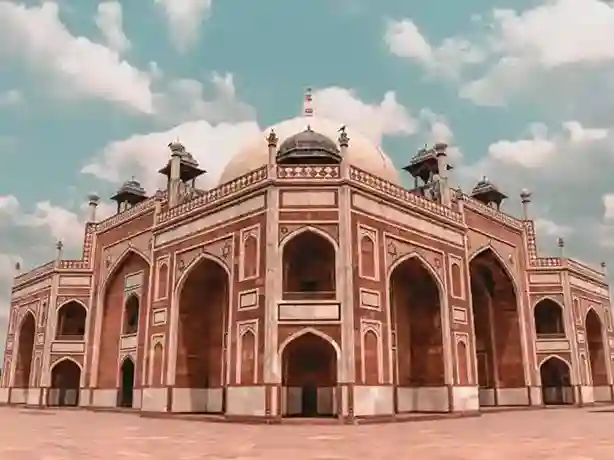

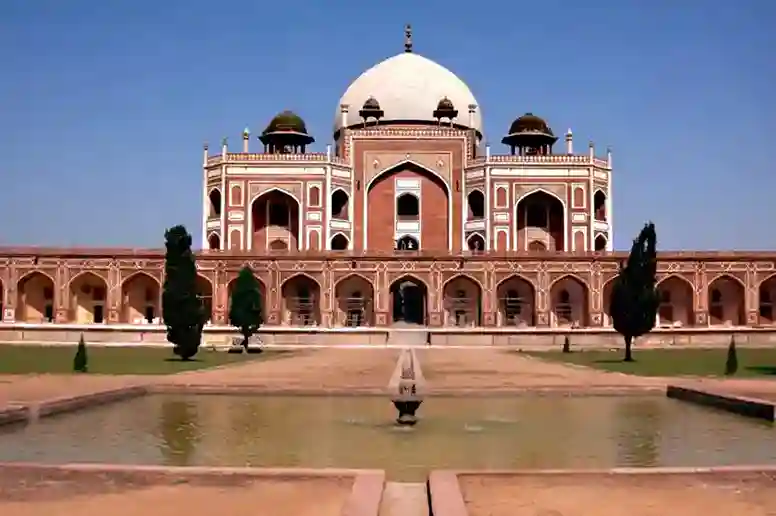
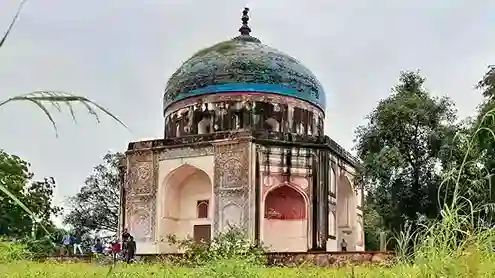
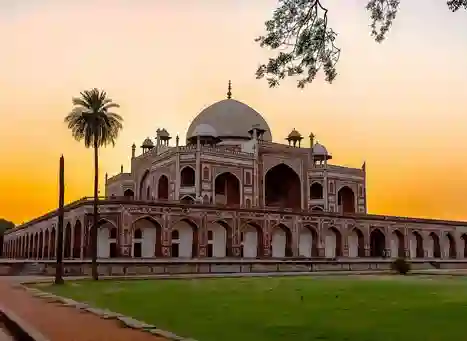
Address Of Humayun’s Tomb Delhi
The Humayun’s Tomb Delhi is located at Mathura Road opposite Nizammudin Aulia Dargah, Delhi.
How To Reach Humayun’s Tomb Delhi
The Humayun’s Tomb Delhi is located at Mathura Road opposite Nizammudin Aulia Dargah in Delhi. It is easily accessible from all parts of the city. Following are the modes of transportation through which you can reach Humayun’s Tomb:
By Metro: The Nearest metro station to Humayun’s Tomb is JLN Stadium Metro Station on Violet Line which is 1.4 Km away from the tomb. From there, you can either walk to the Museum or book a cab/Auto.
By Bus: The Nearest Bus stop to Humayun’s Tomb is Dargah Hazrat Nizamuddin Bus Stop which is 400m away from the Humayun Tomb. You can reach the Bus Stop by Bus No. 19, 166, 181, 274, 334, 403, 408, 794, 966.
By Cab/Rickshaw: You can reach the Humayun’s Tomb Delhi by Cab/Rickshaw.
By Personal Vehicle: You can easily reach the Humayun’s Tomb Delhi with your personal Vehicle.
Parking Facility At Humayun’s Tomb Delhi
Parking Facility is available at Humayun’s Tomb in Delhi.
Website Of Humayun’s Tomb Delhi
The official Website of Humayun’s Tomb in Delhi is Humayun’s Tomb.
Contact Number Of Humayun’s Tomb Delhi
You can contact Humayun’s Tomb Delhi at 011 2435 5275.
Places To Visit Near Humayun’s Tomb Delhi
Top attractions to visit near Humayun’s Tomb in Delhi:
- Sunder Nursery (180 m)
- Hazrat Nizamuddin Aulia Dargah (600 m)
- Purana Qila (2 Km)
- National Gallery of Modern Art (2.5 Km)
- National Zoological Park (2.6 Km)
- Waste to Wonder Park (2.7 Km)
- National Science Centre (3 Km)
- Millenium Park Delhi (3.5 Km)
- Lodhi Garden (3.5 Km)
- India Gate (3.6 Km)
- Sri Kilkari Baba Bhaironath Temple (3.7 Km)
- National Museum (4.1 Km)
- Agrasen Ki Baoli (4.8 Km)
- Jantar Mantar (5.9 Km)
- Nehru Planetarium (6.3 Km)
- Pradhanmantri Sangrahalya (6.3 Km)
- Gurudwara Shri Bangla Sahib (6.3 Km)
- ISKCON Temple Delhi (6.7 Km)
- Shri Laxmi Narayan Temple or Birla Mandir Delhi (6.9 Km)
- Lotus Temple (7.7 Km)
- Shri Kalka Ji Temple (8 Km)
- Nehru Park (8 Km)
- Deer Park (8.4 Km)
- Hauz Khas Fort (8.9 Km)
- Akshardham (9 Km)
- EOD Adventure Park (10 Km)
People Also Read
- Worlds Of Wonder Noida
- Waste To Wonder Park Delhi
- Lotus Temple Delhi
- Akshardham Temple Delhi
- EOD Adventure Park
- Atlantic Water World Delhi
- 5 Best Amusement Parks in Delhi NCR
- 25 Exciting Places to visit in Delhi
- Best Places to visit in Delhi For Free
- 5 Best Amusement Park in Delhi NCR
- 5 Hidden Places in Delhi NCR
- Cheap Places to visit in Delhi
Location Map Of Humayun’s Tomb Delhi
FAQs
What is the Entry Fees for Humayun’s Tomb Delhi?
The Entry fees of Humayun’s Tomb Delhi is Rs 40 for Indians and Rs 600 for Foreigners. They don’t Charge for Photography but they charge Rs 25 for Video Filming.
What is Humayun’s Tomb Delhi Famous For?
Humayun’s Tomb in Delhi is famous for its exquisite Mughal architecture, showcasing intricate details and a splendid dome. It holds historical significance as the burial site of Emperor Humayun and is recognized as a UNESCO World Heritage Site.
Is Humayun’s Tomb Open Now?
Yes, It is open all days of the week from Sunrise to Sunset.
Which is the Best time to Visit Humayun’s Tomb.
You must visit Humayun’s Tomb Delhi in Summer season from October to March.
Which is the Nearest Metro Station to the Humayun’s Tomb?
The Nearest metro station to Humayun’s Tomb is JLN Stadium Metro Station on Violet Line which is 1.4 Km away from the tomb.
Is Humayun’s Tomb a nice place for Couple?
Yes, Humayun’s Tomb is a perfect place for couples to visit. Its beautiful surroundings and architecture create a romantic ambiance for a memorable outing.
What is the opening and closing time of Humayun Tomb Delhi?
The Humayun Tomb opening time is after Sunrise and it’s closing time is before Sunset.

